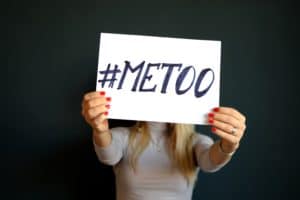The Deaths of George Floyd & Regis Korchinski-Paquet
 Outraged protesters took to the streets across the US to demonstrate against the unnecessary loss of life and the complete lack of empathy shown by police officers for a Black man pleading to hold on to his life. George Floyd’s death could have been prevented if there were stricter policies limiting police use of force in Minneapolis. In Minneapolis police are allowed to use chokeholds and that’s how George Floyd was killed. A 30-year study examining police use of force shows that a ban on chokeholds and strangleholds results in 22% fewer police killings.
Outraged protesters took to the streets across the US to demonstrate against the unnecessary loss of life and the complete lack of empathy shown by police officers for a Black man pleading to hold on to his life. George Floyd’s death could have been prevented if there were stricter policies limiting police use of force in Minneapolis. In Minneapolis police are allowed to use chokeholds and that’s how George Floyd was killed. A 30-year study examining police use of force shows that a ban on chokeholds and strangleholds results in 22% fewer police killings.
On this side of the border, in Toronto, protesters marched in solidarity and also for the loss of life of a young Black woman, Regis Korchinski-Paquet, who was suffering from mental illness and died on May 27 after police came to her home in response to a call for assistance from her family.

 The recent trailer for the upcoming film
The recent trailer for the upcoming film  Readers of our blog will know that employers have a legal obligation to take workplace harassment seriously. These obligations are set out in Ontario’s
Readers of our blog will know that employers have a legal obligation to take workplace harassment seriously. These obligations are set out in Ontario’s  Firstly, Happy
Firstly, Happy  We have talked a lot about workplace sexual harassment on this blog. Practising exclusively in workplace law we, unfortunately, see the issue of workplace sexual harassment come up a lot. Helping employers and employees of all shapes and sizes deal with issues related to sexual harassment makes up a lot of what we do.
We have talked a lot about workplace sexual harassment on this blog. Practising exclusively in workplace law we, unfortunately, see the issue of workplace sexual harassment come up a lot. Helping employers and employees of all shapes and sizes deal with issues related to sexual harassment makes up a lot of what we do. 





